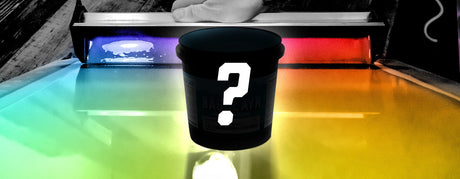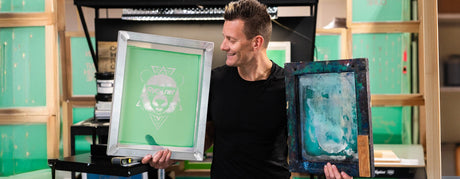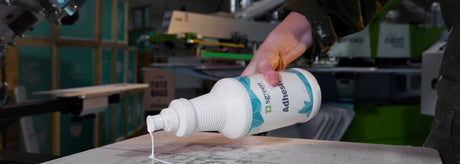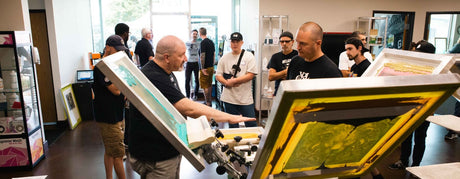
Which Emulsion is Right for Me?
Learn how to choose the right screen printing emulsion for your inks, exposure unit, and darkroom. Compare photopolymer, diazo, and hybrid options, then match emulsions to your setup with practical...
Free Shipping in the Con. US Learn More

Learn how to choose the right screen printing emulsion for your inks, exposure unit, and darkroom. Compare photopolymer, diazo, and hybrid options, then match emulsions to your setup with practical...

Starting in screen printing is exciting—but it’s easy to hit some bumps early on. Whether you’re printing out of a garage or setting up a side hustle, there are a...

If you're a screen printing enthusiast looking to up your game, you're in the right place! Colin, the screen printing guru, has taken a deep dive into some of the...

You got all your screen printing equipment and supplies set up at home. You've printed out some designs for your brand. You're ready to show the world what you can...

Decided you're ready to kick the aerosol can? Don't blame you. Who wants to inhale chemicals from a spray adhesive? Plus, a spray adhesive gets everywhere — you, your glasses (if you wear...

You've decided you want to live print, and you've got your first gig set up. Next step, figuring out what to bring. Knowing what to bring will depend on many...

Every printer wants to save time and cash, right? Most screen printers know the most common time-saving hacks: optimizing print setup, keeping a stock of burned screens handy, and getting...

Stepping into screen printing? There are lots of art terms to learn. Garment terms, printing terms, and art terms, it’s all important. If you’re creating your art for screen printing, you’ll need...

Emulsion remover removes emulsion. Seems simple, right? This chemical reclaims stencils faster with a concentrated emulsion remover solution. The chemistry breaks down emulsion when applied to a screen, and can be used in...

Quick Response codes, or QR codes, are everywhere. You sit down at a restaurant and to read the menu, you have to scan a QR code. You walk through a...

Each printer has their own unique story of why they got into screen printing. Some wanted to start their own clothing line. Others found it as a way to make...

Figuring out exposure times is one of the most difficult tasks in screen printing. If you're struggling, you're not alone. The best thing you can do is invest in a 21-Step...

One of the scariest parts of screen printing is turning a profit. Printers want to make a profit and stay competitive, but not price too high or too low. How...